 HISTORY
OF THE COMPANY HISTORY
OF THE COMPANY |
Airports Fiji Limited (AFL) was established as
a result of the re-organisation of the Civil Aviation
Authority of Fiji (CAAF) under the Public Enterprise
Act 1996. AFL was then declared a Government Commercial
Company (GCC) on the 3rd of June 1998 and began
operations on 12th April 1999. The purpose of
this reorganization was to ensure that AFL became
more efficient and productive, more accountable,
better organised, more focused on commercial activities
and be profitable. AFL is a commercial body 100%
owned by the government is responsible for Air
Traffic Services in the Nadi Flight Information
Region (FIR).
 PRINCIPAL
ACTIVITIES PRINCIPAL
ACTIVITIES |
The principal activities of the company are:
a) The provision of Air Navigation services within
the Republic of Fiji Islands airspace and the
Nadi Flight Information Region in pursuance of
international arrangements entered into by the
State
b) The provision of services and faculties at
all airports to facilitate safe and efficient
operations.
c) Ownership and operation of the Nadi International
Airport, Nausori and fourteen other airports and
installations located around Fiji.
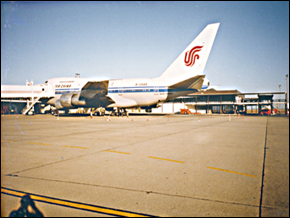
 CORPORATE
VISION CORPORATE
VISION |
To be a major aviation centre in the Asian and Pacific
regions and the Gateway to the South Pacific.
 CORPORATE
MISSION CORPORATE
MISSION |
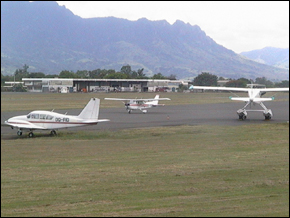
To provide customer focused, safe and cost effective
air traffic management and airport services and
to provide a fair return on shareholder's funds.
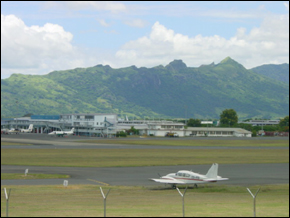
 CORPORATE
VALUES CORPORATE
VALUES |
Our Customers: We are committed to providing
efficient and cost effective services to all our
customers and are responsive to their needs.
Our Government: We are committed to maintaining
high standards of safety services at all airports
in Fiji and the Nadi Flight information Region
and to provide an acceptable level of return to
Government on its investment.
Our Employees: We recognize our employees
as our most important asset. We are committed
toward working together in a spirit of cooperation,
mutual respect, fairness, and openness for the
success of the organisation.
Our Community: We are committed to strengthening
our relationship with the community through our
active participation in its social programmes
as well as in initiatives for the protection of
the environment.
Our Business Partners: We are committed
to establishing and strengthening our relationship
with strategic partners for our mutual benefits.
 CAIRPORTS CAIRPORTS |
Apart from the Nadi and Nausori International
Airports, there are fourteen other domestic airports
that AFL operates and manages. These domestic
airports are operated as non-commercial function
of AFL.
AIRPORTS
Table
STATISTICS
Table
Nadi International Airport
Graphic
Nausori International Airport
Graphic

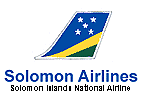


 Royal Tongan Airlines
Royal Tongan Airlines

 Air Nauru
Air Nauru
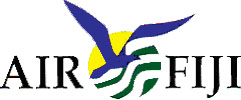







 HIGH QUALITY
SERVICES AT LOW COST HIGH QUALITY
SERVICES AT LOW COST |
AFL is setting the bases to expand the use by
international aircraft into Nadi and Nausori International
Airports. There is an overall plan to make the
Airports more "user friendly" to aircraft
and passengers.
FUEL PRICES REDUCTION
AFL has progressively lowered its fuel prices
as part of its ongoing campaign to encourage more
aircraft into Nadi International Airport. Initially
the company reduced the price of fuel from FJD
1.67 cent per litre to FJD 1 cent. A second reduction
to FJD 3/4 of a cent a litre in July 2002, while
the final reduction to FJD 1/2 of a cent was set
from October 2002.
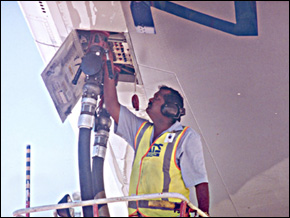
From being the highest priced fuel in the region,
the reductions has made AFL one of the lowest.
It has had a positive impact on aircraft movements,
resulting in an increase in landings and fuel
uplift. The airlines have received enthusiastically
the significantly lower fuel prices and they have
helped increase the number of freight aircrafts
landing in Fiji from 2 to 5 per week. As a result
of the lower fuel prices, Nadi International Airport
increased its sales from 7million litres/month
to around 9 million litres/month in 2002.
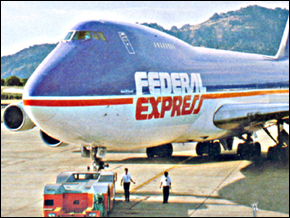
AIRPORT MASTER PLAN
In April 2002, AFL's board received the completed
reports of the revised Airport Master Plan for
Nadi Airport and a new Airport Master Plan for
Nausori Airport form the Singapore Airport Consortium,
a joint venture company between Singapore Changi
Airport Enterprise Pte. Ltd. and PWD Consultants
Pte. Ltd., who were awarded the contract for this
project. The Singaporean team has looked into
the short term immediate requirements to bring
the Nadi and Nausori Airports to standards, and
the long term developments that would prepare
Fiji for major increases in both passengers and
aircraft over the next fifty years.
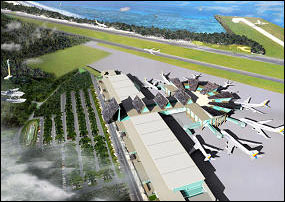
The reports on the airport master plans were in
two phases. The first phase covered the short
term developments required to meet forecast growth
in traffic to around 2010 and the provision of
additional floor space for commercial activities
to increase AFL revenue from non-aeronautical
sources. The second phase covered both the traffic
and commercial requirements of the two airports
beyond 2010.
|
AFL has budgeted $72
FJD million (36 USD million) for the upgrading of
Nadi and Nausori Airports for 2003. The airport
development fees will subsidize the costs that will
improve the comfort and the level of services that
will be provided to the passengers. It will enhance
Fiji's position as the Gateway to the South Pacific
at a time when destinations are becoming increasingly
competitive.
For domestic airstrips, AFL has sealed and fenced
the Labasa Airport, sealed the runway at Taveuni
and Savu-Savu, renovate the terminal building
at Kadavu and sealing the runway, improving runway
drainage in Lau, and provide general maintenance
at all the 14 government airstrips serviced by
AFL.
NADI INTERNATIONAL AIRPORT
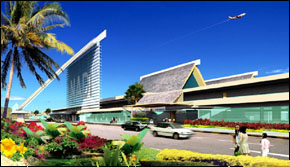
There are now more than a million people a year
passing through the Nadi International Airport
which was putting a great strain on AFL'S resources.
Stage I of the first phase development of the
Nadi Airport terminal building is completed. Upgrading
facilities include aerobridges, more apron space
for aircraft parking, more commercial space to
increase AFL's revenue and more space to better
facilitate passenger flow. The works will improve
Airports Fiji Ltd's ability to service passengers
and users of the airport facilities. It will be
ready to receive the large volume of traffic expected
in Fiji during the 2003 South Pacific Games.
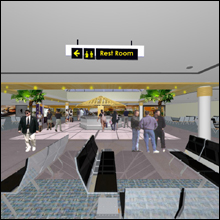
The feasibility study for the runway extension
and the repair to the damaged apron pavement is
being undertaken and AFL will see how it will
fit into their development plans once the review
is completed. There is no question of the importance
of extending the runway into the Bay. It would
then be long enough to land a Boeing 747 where
now it can only handle up to a Boeing 737. It
would mean that the noise of the aircraft taking
off would be taken out to sea. And it would ensure
that if the wind is not favourable on the main
runway, the larger aircraft could still carry
full loads at take off.
NAUSORI INTERNATIONAL AIRPORT
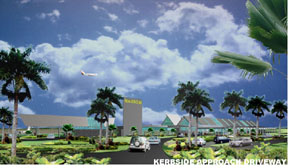
The Master Plan also has provisions for the new
control tower at the Nausori Airport, and an upgrade
of its terminal building. The original design
to expand the present building has been dropped
in favour of the construction of a new terminal
building. This will allow for an early removal
of the "Black Star" rating given to
this airport by the International Federation of
Airline Pilots Association (IFALPA) and to also
provide for more commercial floor space to increase
non-aeronautical revenue and avoid continuing
cross-subsidy from Nadi Airport.
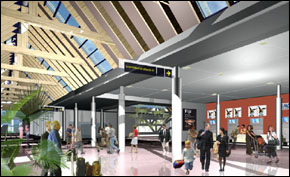
 TECHNOLOGY TECHNOLOGY
|
During the year 2001, AFL decided to spend $7
million to upgrade its technology at the Nadi
International Airport as part of its $20.6 million
expenditure approved by its Board for that year.
Since Government restructured CAAF into two separate
organisations now known as CAAFI and AFL in 1997,
the country had fallen behind in technology that
it is essential to maintain the ever-increasing
demands on the Nadi International Airport and
the Region. It would be spent upgrading its air
traffic control system based on the latest satellite
technology.
AIR TRAFFIC MANAGEMENT (ATM)
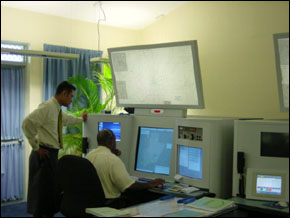
This is a state of the art system that vastly
improves the capabilities in the regional surveillance.
It goes far in helping AFL to provide cutting
edge technology for the Flight Information Region,
an area of over 7.5 million square kilometres
where AFL maintain constant communications with
all aircraft that fly within its parameters. AFL
is also considering upgrading its domestic surveillance
system that will give them improved visual contact
and communications with the aircrafts flying in
Fiji. A new Air Traffic Management (ATM) Centre
now houses the new system.
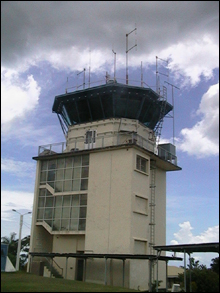
The opening of the Air Traffic Management Centre
at Nadi has presented Fiji with the opportunity
to increase the number of flights into the country
within the same volume of airspace it currently
controls. Safety however is not compromised, but
enhanced due to the introduction of the new system.
The ATM centre, which is equipped with the latest
aviation guidance system, the EUROCAT 2000X, has
the capacity to provide pilots and air traffic
controllers with significant improvement in situational
awareness they were not privy to before. The net
result of which is precise navigation and an overall
increase in the safety of flights. Under the new
system, Nadi now has the capability to accommodate
flights buffered by a vertical layer of 1,000
feet instead of 2,000 feet of the previous system.
With the old system an aircraft flying between
29,000 feet and 41,000 feet would be subject to
2,000 feet vertical separation. That allows for
only 7 vertical flight levels to be utilized by
aircrafts. The new system makes available an extra
6 flight levels for utilization by aircrafts.
Hence in the same volume of space it is now possible
to accommodate a total of 13 flights when previously
only seven could be accommodated. Another development
is that aircrafts can now follow each other on
the same horizontal flight path at intervals of
15 minutes and in special instances ten minutes,
previously the requirement was 20 minutes.
DIGITAL VOICE LOGGER
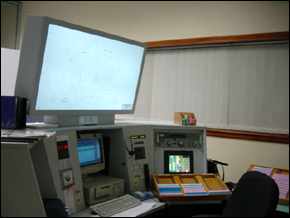
Together with the ATM Centre, AFL also upgraded
its automatic voice logging equipment. Two Digital
Voice Logging Systems (multi-channel voice recorder)
were supplied by NICE Ltd. of Israel and have
been installed at both Nadi and Nausori at a cost
of $0.3million. These systems will digitally record
all ATC voice conversations and communications
between several parties including between aircraft
and control towers. This is a requirement by the
International Civil Aviation Organisation (ICAO)
and is vital to the investigations of aircraft
incidents and accidents. This NICE log model is
one of the widely used recorders in the ATC environment
during the last five years. Major users include
the US FAA, ICAO and other airports around the
world. The system is user friendly with more capacity
for development. The tapes used in this system
are much smaller, effectively eliminating storage
problems that existed. And due to its digital
nature, it is easier to interface with new generation
ATM components.
AFTN MESSAGE SWITCHING SYSTEM (AMSS)
AFL has also accepted the commissioning of a $2.06
million AFTN Message Switching System (AMSS) that
provide instant airport and airline related information
worldwide. Fiji is the only country in the region
that has this particular system and Nadi is a
designated by ICAO as switching centre in this
region. This system will allow an authorized user
(airline etc.) to submit its flight plans through
the Internet.
MULTIUSER SYSTEM ENVIRONMENT (MUSE)
Queues will be reduced once the MUSE are installed
in the new check-in counters at Nadi International
Airport. Check-in stations, gate areas, and the
back office will all use the same hardware and
infrastructure, which increases efficiency.
 SAFETY SAFETY |
NEW SERVICE ROADS
An airside roadway system is established to
minimize conflicting movements between aircraft
and vehicles. The primary apron service road is
routed in front of where aircraft are parked while
a secondary apron service road is at the back
of the aircraft particularly for very tall vehicles.
Appropriate markings have been painted on the
ground or mounted at relevant locations to indicate
aircraft crossing locations.
AIRSIDE AWARENESS TRAINING PROGRAM
AFL Staff at Nadi and Nausori International
Airports took part in an Airside Awareness Training
Program conducted by the Apron Safety Officer.
The program was designed primarily to focus on
apron safety and the responsibilities of workers
at airside, but it also included airside installations
and their functions, interpretation of apron safety
markings and signage and general rules of airside
driving.
|

